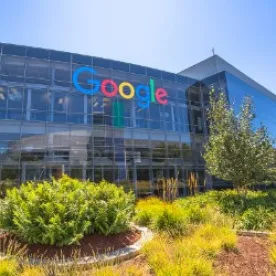On January 24, 2023, the Antitrust Division of the U.S. Department of Justice (“DOJ”) and state attorneys general for California, Colorado, Connecticut, New Jersey, New York, Rhode Island, Tennessee and Virginia filed a civil antitrust lawsuit in the U.S. District Court for the Eastern District of Virginia against Google LLC (“Google”). The complaint alleges that Google used acquisitions and exclusionary strategies to maintain its monopoly power in digital advertising technologies markets. This complaint is the second antitrust case brought by the DOJ against Google since 2020, when the DOJ sued Google for monopolizing the search advertising markets.
This alert presents a high-level summary of the allegations and theories of harm, which are more extensively detailed in the DOJ’s 155-page complaint.
Background on the digital advertising markets
When an internet user opens a website, a complex series of transactions occurs nearly instantaneously to determine which ads to show to that user in each available ad space on the website. There are three types of digital advertising technologies involved in these transactions (collectively referred to as the “ad tech stack”):
-
Technologies used by website publishers to connect advertisers to their available ad inventory;
-
Technologies used by advertisers to select and bid on that inventory; and
-
The ad exchange in the middle that facilitates the transactions by operating the advertising auction.
At all parts of the ad tech stack, the ability of an ad tech product to achieve scale is critical to its long-term success. Scale and the accompanying network effects make an ad tech tool or platform more attractive because of the ability to target more publisher inventory or access additional advertisers. Publishers want to use tools that can connect to a variety of advertisers; advertisers want to use tools that feature a variety of publishers’ inventory; and both want to use an ad exchange that allows for the use of the most attractive tools.
DOJ complaint
The DOJ alleges that beginning in 2008, Google engaged in a series of anticompetitive conduct to preserve its dominant market position at all three sides of the ad tech stack, beginning with acquisitions to increase their market position in the publisher technologies and ad exchange markets:
-
In 2008, Google acquired DoubleClick for Publishers (“DFP”), a tool used by publishers to connect to advertisers. Following the acquisition, DFP began extremely popular with publishers because of the existing popularity of Google Ads, the company’s advertiser-side technology.
-
In 2008, Google acquired AdX, a nascent ad exchange that ran advertising auctions between publishers and advertisers.
The DOJ alleges that following these acquisitions, Google engaged in exclusionary conduct by utilizing its monopoly power in one part of the ad tech stack to create or maintain its monopoly positions another by locking in publishers and advertisers’ products:
-
Google required advertisers to use AdX to access Google Ads, and required publishers to use AdX to access DFP.
-
Google configured Google Ads to bid on AdX in a way that increased the price of advertising, to the financial benefit of publishers and Google, which collected a transaction fee as the operator of the ad exchange.
-
Google manipulated auctions on AdX so that Google would have the exclusive opportunity to buy publisher inventory before it was offered to any other ad exchange, often at artificially low prices.
Additionally, the DOJ alleges that Google utilized its monopoly positions to eliminate competition by preventing rival ad exchanges and platforms from achieving the scale required to compete with Google:
-
Google programmed DFP to prevent publishers from offering preferential terms to other ad exchanges or allowing those exchanges to operate in the same way with DFP.
-
By 2010, rival companies began offering “yield management” functionalities to publishers, which helped publishers identify better prices for their inventory outside of Google’s products. In response, Google acquired AdMeld, the leading yield manager at the time, and shut down all operations with non-Google ad exchanges and advertiser tools.
-
In 2013, Google launched a project to manipulate bids that Google Ads submitted into AdX in order to win more competitive transactions relative to its rival ad exchanges.
-
Between 2012 and 2013, market participants began engaging in “header bidding,” essentially a workaround to Google’s ad tech restrictions for allow publishers to use non-Google ad exchanges. In response, Google began a program titled “Open Bidding” through which Google would purposefully bid lower on header bidding queries to divert transactions away from rivals’ ad exchanges that might deploy header bidding.
-
When Google learned that publishers were using price controls within the Google DFP publisher ad server to sell advertising inventory to rival exchanges, Google imposed “Unified Pricing Rules” to preclude publishers from using price floors to choose rival exchanges.
The DOJ alleges that Google’s conduct resulted in higher prices and margins for Google at the expense to all other participants in the ad tech stack.
Google charges revenue share fees for every transaction flowing through its ad tech stack directly from advertisers’ advertising budgets and publishers’ bottom-line revenues. Google’s internal documents estimate that the company keeps about 35% of every dollar spent on digital advertising. As a result, publishers earn less for ad campaigns, advertisers pay more than they otherwise would in a market where competitors could assert pricing pressure on Google, and online consumers have fewer options for internet content without subscriptions, paywalls, or alternative forms of monetization. The complaint also alleges that Google’s exclusionary conduct as diminishing rivals’ ability to scale, resulting in lack of choice for participants on both sides of the stack (publishers and advertisers alike) and at the expense of innovation in the digital advertising industry.
The DOJ is seeking treble damages sustained by federal government agencies that overpaid for digital advertising, declaratory judgment that Google has violated Sections 1 and 2 of the Sherman Act, and structural relief needed to remedy the harm including the divestiture of Google’s DFP and AdX. The DOJ is also seeking injunctive relief to enjoin Google from continuing any of the anticompetitive conduct alleged in the complaint.
Takeaways
This case carries enormous significance for both the DOJ and Google.
For the DOJ, this case reflects the Biden administration’s promise to enforce the antitrust laws against Big Tech. The overall theory of harm from the complaint appears to focus on a totality of the acquisitions and exclusionary conduct within the digital advertising marketplace that leads to the alleged anticompetitive effects. While acquisitions of vertical assets and the separate instances of exclusionary conduct are not novel theories of antitrust harm, the framing of the conduct in combination to be anticompetitive will be a critical tactic to watch for as the government investigates similar conduct across Big Tech. While this is not the only enforcement action that Google is facing with respect to its conduct in the digital advertising markets,[1] the DOJ’s decision not to join an ongoing case could signal their intent to spearhead such cases and aggressively prosecute similar conduct going forward.
This case is also notable as the first antitrust case in which the DOJ requests a jury trial to seek damages sustained from the alleged anticompetitive conduct. To our knowledge this is the first time the DOJ has sought damages, as opposed to monetary penalties in a criminal antitrust case, and trying a complex civil case to a jury will be an interesting challenge for the Antitrust Division.
For Google, revenue from digital advertising comprises approximately 80% of parent company Alphabet Inc.’s annual revenue. If the DOJ were to succeed in demonstrating that Google’s conduct in the digital advertising markets violated the antitrust laws, Google’s entire digital advertising model may be in jeopardy with respect to any forced divestitures or other injunctive relief.
As with most antitrust cases, the company’s internal documents will likely highlight the DOJ’s prosecution. The complaint consistently refers back to Google’s internal documents to support its argument that Google abused its market power and was aware of such abuse. Notably, DOJ Assistant Attorney General for the Antitrust Division Jonathan Kanter opened the press conference announcing this case by citing an internal document in which a Google executive compared the company’s monopoly positions across the ad tech stack to “Goldman [Sachs] or Citibank owning the New York Stock Exchange.”
This alert provides a high-level summary of the DOJ’s 155-page complaint, which provides much further detail and context to the allegations and theories of harm.
FOOTNOTES
[1] In 2020, the state attorney general for Texas and 16 other states or territories filed a lawsuit against Google in the Eastern District of Texas. In September 2022, the court allowed the majority of the case to proceed while dismissing allegations relating to an alleged agreement between Google and Facebook, Inc. The DOJ’s complaint contains many of the similar allegations with the exception of the alleged Google-Facebook agreement. The European Commission, which has previously imposed billion-euro fines against Google for violating its antitrust laws, is also investigating Google’s conduct in the digital advertising markets.




 />i
/>i
